Rajasthan is appropriately named as “the Land of Kings”. It is indeed one of the most beautiful states of India replete with lavish palaces and majestic forts of ‘maharajas’ depicting their fabulous kingdom. The interesting stories associated with the leftovers of romantic and rich past of the state makes it the most preferred choice for the tourists to visit at least for once in a lifetime. In addition to the evocative remnants and restored luxury, Rajasthan has much more to showcase and captivate the attention of the tourists. This iconic state is the land of deserts, places, vivid art, rich culture and tradition.
1. Amer Fort Jaipur
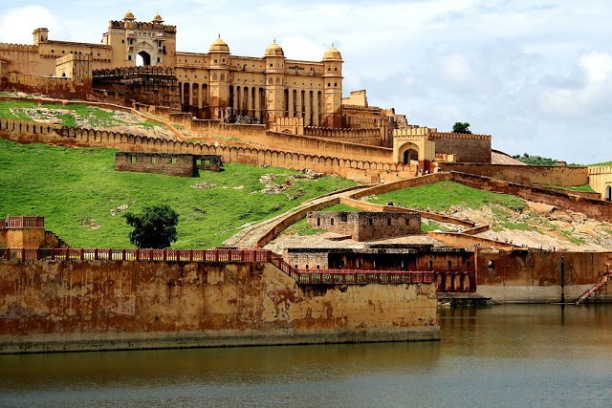
Many tourists visit this fort for enjoying elephant ride around the fort. This fort is located in Jaipur. This fort stands as an architectural marvel of yesteryear Indian architects. This fort was built in 17th century in a mixture of Hindu architecture and Muslim architecture style. Light show is conducted every evening. This fort has palaces, temples, gardens and many others. A temple inside this fort was built in 16th century. This temple of Goddess Kali is an important place for Hindu travellers. The entrance gate of this fort is a marvel. This gate is surrounded by gardens of Mughal style. Sheesh Mahal is a hall filled with thousands of mirror tiles. Other important places in this fort are Jas Mandir, Aram Bagh, Jas Mahal, museum, Maota Lake and others.
2. City Palace Jaipur
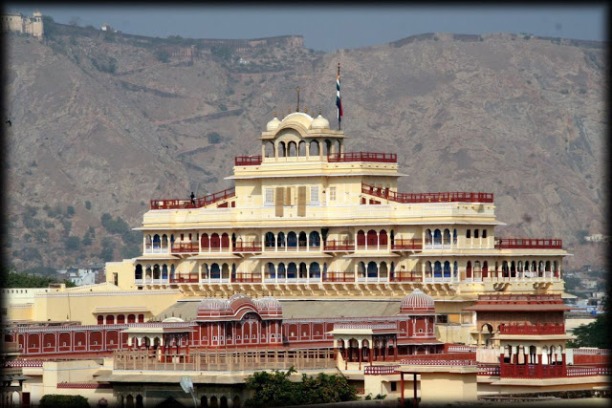
City Palace is located in Jaipur. It was built in 18th century. This palace has an architectural style that mixes Indian and European style. The first main element in this palace is the entrance. There are three entrances and each one is a beauty by itself. Mubarak Mahal used to be the reception of the palace. Today, this Mahal houses costume museum and other exhibits. In this museum you can find a lot of royal clothes that was worn by Sawai madho Singh, king of the palace. It is said that he weighed 250 kg and had 108 wives. Chandra Mahal is famous for the peacock gate. Other important spots in City Palace are Pitam Niwas Chowk, Green Gate, Lotus Gate, Rose Gate, Diwan –I-Khas, Siwan – E- Aam, Maharani palace, Govind Dev Ji temple, Bhaggi Khana and others.
3. Hawa Mahal Jaipur
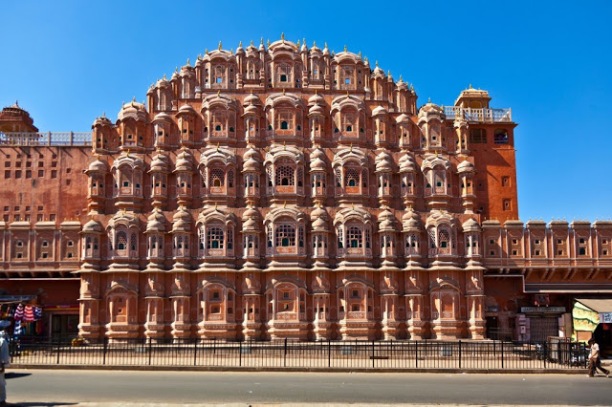
Hawa Mahal is also called as the palace of wind. The palace gets this name because of the screened walls which when opened will gush wind in and out of the Mahal. These screens were built to let women inside the Mahal watch activities on the street. The Mahal is made of pink and red sand stone. It was built in 18th century in the structure of a honeycomb. There are 953 windows with intricate latticework. As stated before, if all windows were open, you can enjoy a real flow of wind. But, most of the windows are closed to avoid accumulation of dust. The top attractions in this Hawa Mahal are the courtyard, windows, fountain, imperial door and archaeological museum.
4. Jaigarh Fort Jaipur
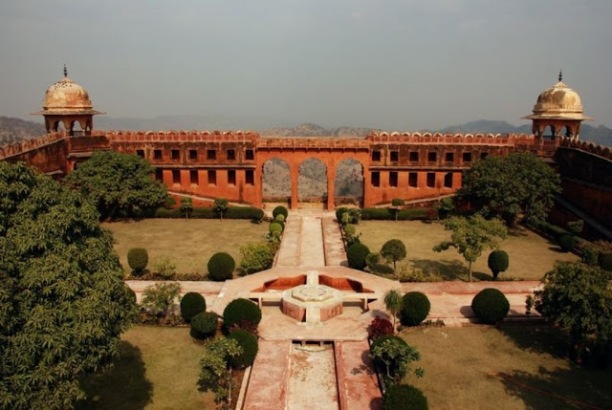
This fort is also called as Victory Fort. It is located in Jaipur. The main element that attracts people to this fort is the Jaivana Cannon. It is the largest cannon in the country and it is placed on a tall tower that focuses Amber Fort. This fort was meant to stand as a guarding tower for Amer fort and other parts of Jaipur. Another rumour that populates this fort is that there is treasure hidden inside the fort. Apart from these, this fort has many palaces, temples, museum, gardens and others. This fort withstood a lot of damages even after 100 years from building it. It used to house many residential areas, water reservoirs, granary, tall tower and others. Most of those do not stand today. A few treasures were dug and retrieved by government from this fort. Though this is a plain fort when compared to other historic places, it is one of the best structures of Jaipur kings that served its purpose. You can get a panoramic view of the whole city from the top of this fort.
5. Nahargarh Fort Jaipur
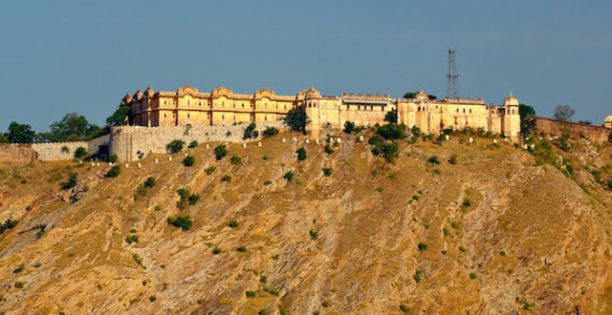
This fort is located in Aravalli Hills, Jaipur. This used to be a royal retreat during 18th century. This fort’s name can be loosely translated as abode of tigers. This fort is surrounded by forest and mountain background. This is the only fort in the country that was never attacked at all. It gave shelter to Europeans during mutiny. This fort has many palaces, temples, open air enclosure and many others. This fort is near to many tourist attractions like Hawa Mahal, Jaigarh Fort, Jal Mahal and others. Thus, you can spot most of these attractions from the top of Nahargarh Fort.
6. Ranthambore Fort, Sawai Madhopur
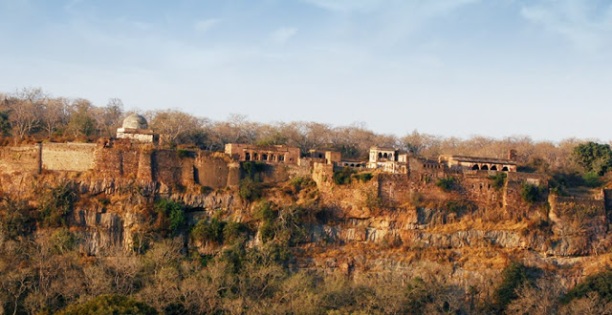
This majestic fort is the landmark of Ranthambhore National Park. Situated about 5kms inside the wildlife reserve, Ranthambhore Fort is the marvel of the Chauhan dynasty. The construction of the fort began in 944 AD under the rule of King Sapaldaksha but it was during the time period of Rao Hammir Deo Chauhan that the fort took shape. It is recognized by UNESCO World Heritage Site that places it under the title ‘Hill Forts of Rajasthan’. The mansion is built upon a 700ft high hill and is one of the major attractions in Ranthambhore National Park. Once this fort severed as a royal hunting reserve and had a sprawling jungle around it giving enough space to carry out this adventure sport. However during the 1950s it became a part of the ‘Sawai Madhopur Game Sanctuary’ that was set up to conserve the dwindling wildlife in the area.
7. Trinetra Ganesh Temple, Sawai Madhopur
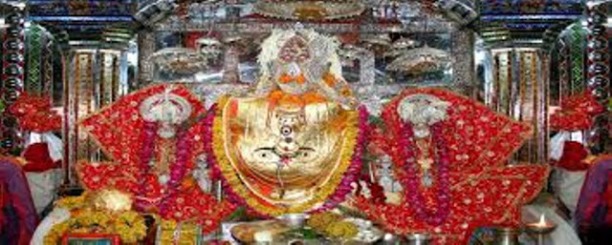
Situated inside Ranthambhore Fort, Trinetra Ganesh Temple is yet another attraction in Ranthambhore National Park. Trinetra (Three-Eyed) Ganesh or Pratham Ganesh Temple is amongst the oldest temples in Rajasthan. It is one of those temples, where one can find the deities of the entire family of Lord Ganesha. The temple was built by King Hammer, who is believed to be an ardent devotee of Lord Ganesha. The legend has it that while King Hammer was at war here, their stocks of food were running out. Then one night, Lord Ganesha appeared before the King and assured him that the stocks will be filled and his problems will be solved by the next morning. Miraculously, the next day, the war ceased and the food stock replenished; therefore the king decided to build a temple for Lord Gamesha here. A large number of Ganesha devotees throng this temple and five aartis are held each day here.
8. Taragarh Fort, Bundi
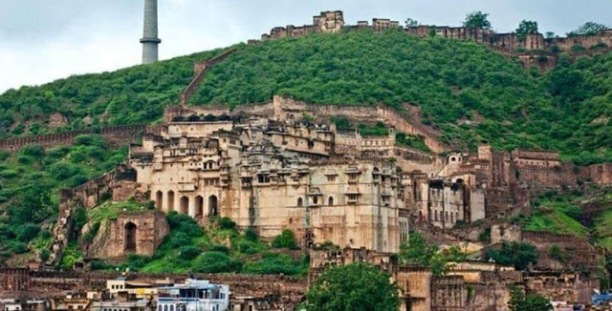
The palace is entered through the imposing Hathia Pol (“Elephant Gateway”), flanked by two towers and topped by a pair of huge painted elephants. The most spectacular parts of the palace are the Chattar Mahal (built in 1660), and the Chitrashala, an arcaded gallery (built between 1748 and 1770) overlooking a hanging garden. The murals in these are regarded as among the finest examples of Rajput painting. The themes they cover include scenes from religious ceremonies, hunting scenes and other princely amusements. The colors are predominantly blue and green, with touches of deep red and yellow. The Taragarh Fort crowns the crest of a steep hill overlooking the town, while the Garh Palace spills picturesquely down the hillside. This palace is Bundi’s – and Rajasthan’s – jewel. Lieutenant Colonel James Tod, (1782-1835), the British Political Agent and author of the authoritative Annals and Antiquities of Rajasthan, wrote that “the coup d’oeil of the castellated palace of Bundi, from whichever side you approach it, is the most striking in India.”
9. Pushkar Lake
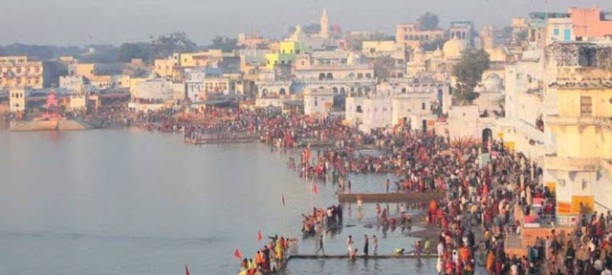
The scenic lake of Pushkar is situated in a valley about 10 kms to the northwest of Ajmer. Pushkar Lake is enclosed by hills and desert. Pushkar Lake is one of the most holy place for Hindus. There are about 52 Ghats and 400 temples in Pushkar which are situated on the banks of the Pushkar Lake. It is considered that the famed waters of the Pushkar wash away the sins of whole life.
Pilgrims from all over come to take bath in the holy waters of Pushkar on the day of Kartik Purnima or on any of the four days before the day of Kartik Purnima and also worship at the Ghats. The spiritual water of the Lake is also considered to treat skin diseases, making Pushkar “the Lourdes of the East”.
History of Pushkar Lake – The history of Pushkar Lake dates back to 4th century BC. The creation of Pushkar Lake, as an artificial lake goes back to12th century. In 1615–16, the Mughal emperor Jahangir set up his hunting lodge on the shores of the Pushkar Lake. He came to this lodge for hunting when he was staying in Ajmer, about 20 kilometres from Pushkar. This act breaks the local custom of in which animals are not to be killed in the areas of the holylake. Later, grandson of Jahangir named Aurangzeb (1618–1707) destroyed some of the temples of the pushkar which were built again afterwards. The Rajput rulers of Amber, Bundi, Bikaner and Jaisalmer put their maximum efforts to re-establish the significance of the lake and its nearby temples.
Ghats of the Pushkar Lake are also renovated and also temples are built around it by various rulers like Maharaja Man Singh I of Amber, Daulat Rao Scindia, Maha Rana Pratap etc.
10. Brahma Temple in Pushkar
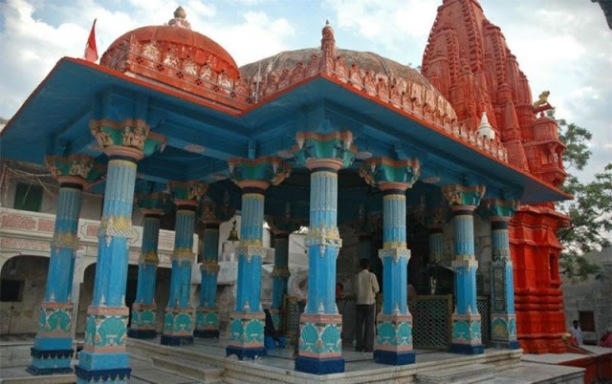
Brahma Temple in Pushkar is one of the most famous and only few of the temples dedicated to Lord Brahma in the holy city of Pushkar, Rajasthan. This Pushkar Brahma Temple is the place of deep spirituality and thousand of devotees come here to pay homage to the many gods that reside in this temple town. Pushkar city has over 500 temples with the main Pushkar temple. It is dedicated to lord Brahma and the only Brahma temple anywhere in the world. Although the structures of the temple dates back to 14th century but it is believed that the temple is about 2000 years old.
